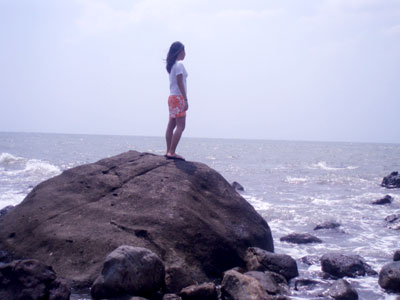All Nonfiction
- Bullying
- Books
- Academic
- Author Interviews
- Celebrity interviews
- College Articles
- College Essays
- Educator of the Year
- Heroes
- Interviews
- Memoir
- Personal Experience
- Sports
- Travel & Culture
All Opinions
- Bullying
- Current Events / Politics
- Discrimination
- Drugs / Alcohol / Smoking
- Entertainment / Celebrities
- Environment
- Love / Relationships
- Movies / Music / TV
- Pop Culture / Trends
- School / College
- Social Issues / Civics
- Spirituality / Religion
- Sports / Hobbies
All Hot Topics
- Bullying
- Community Service
- Environment
- Health
- Letters to the Editor
- Pride & Prejudice
- What Matters
- Back
Summer Guide
- Program Links
- Program Reviews
- Back
College Guide
- College Links
- College Reviews
- College Essays
- College Articles
- Back
Evolving in Education on the Galapagos Islands
It was 4 AM on April 5, 2009 at the San Francisco International Airport. A group of groggy teenagers gathered at the check-in line. I greeted my friends, grateful that I had decided not to attend prom the night before. My parents had given me a choice: Go to junior prom or fly to the Galapagos Islands on an once-in-a-lifetime school science trip. I chose the latter.
Five months earlier, I was invited by my AP Biology teacher on a school trip to the Galapagos Islands through the Ecological Project International (EPI) program. EPI arranged for our flight, hotels, and all activities.
Three plane flights later, on April 6, my group finally arrived on Isla Santa Cruz, the most populated island in the Galapagos archipelago. We met our energetic EPI instructors, Alonso and Leah, who acted as our tour guides throughout the trip. A bus shuttled us to FUNDAR, a conservation farm where we stayed for a few nights. The next day we visited the Charles Darwin Research Station in Puerto Ayora, the island’s main city.
The Galapagos Islands, off the coast of Ecuador in South America, are known as the place where Darwin conceived his theory of natural selection, and the reason why is evident. The islands have a great diversity of plants and animals. There are thirteen species of finches which each evolved from one common ancestor. The islands are also the home of the blue-footed boobies, marine iguanas, and fourteen sub-species of giant tortoises.
My trip to the Galapagos was a great learning experience. Our EPI instructors taught us the basics of ecology. We then applied these concepts to the Galapagos environment. EPI gave us the chance to conduct scientific research for ourselves. At the Charles Darwin Research Station where giant tortoises are raised until they are old enough to be released into the wild, we were able to go behind the scenes and measure the baby tortoises. It was a surreal experience for me to hold these tiny tortoises that I knew would grow into monstrous adults up to 4 feet long. After measuring the tortoises, we also observed the giant adult tortoises that lived at the Station, including Lonesome George— the last tortoise of his sub-species.
Next we sailed to the largest island, Isabela, and stayed in its main town, Puerto Villamil. On Isabela, we hiked up Sierra Negra, the second-largest caldera in the world. It was an exhausting, all-day hike, but the view from the top was unbelievably rewarding. We could see the vast expanse of the caldera and the black rock where lava had flowed only five years before when the volcano last erupted. The next day, we snorkeled in a shallow reef. To my surprise, baby sea lions swam right up to us, begging for us to play with them!
Throughout my trip, I experienced nature untainted by humanity, a rare sight in our modern world. EPI’s program gave me a greater knowledge of ecology and an appreciation of nature’s beauty which I have carried back to my life in America. I am now more aware of how my decisions affect the environment and the endangered species of the world, including the Galapagos Tortoises. I would recommend the EPI trip to anyone interested in the islands, because EPI offers opportunities not available to the general public such as a cultural exchange in which you visit high school students who live in the Galapagos. If you ever have the chance to visit the Galapagos Islands, I urge you to go while the islands are still pure.

Similar Articles
JOIN THE DISCUSSION
This article has 0 comments.
